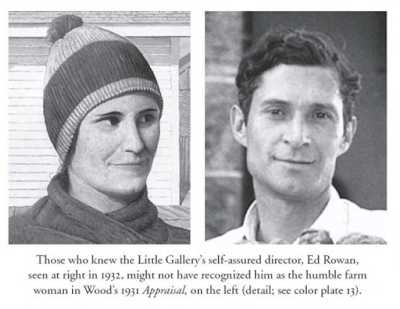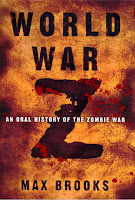Pennies from Heaven Was Not Filmed in Dubuque
In a recent discussion on the Facebook nostalgia page “You know you grew up in Dubuque, Iowa if you remember,” several people mentioned that the movie Pennies from Heaven was made in Dubuque, and as proof they cited IMDb.com, aka the Internet Movie Database.
Pennies from Heaven (1981) is an R-rated musical set in Depression-era Chicago. Steve Martin stars as a financially and sexually frustrated sheet-music salesman who seduces a seemingly naïve school teacher played by Bernadette Peters. The movie also stars Jessica Harper, Christopher Walken, Vernel Bagneris, and John McMartin. It is directed by Herbert Ross.
IMDb includes Dubuque as one of the filming locations for Pennies from Heaven, but if you watch the movie carefully, Dubuque does not appear on screen. Outdoor scenes which look vaguely like Dubuque’s Historic Millwork District were actually filmed around the 4th Street Bridge in Los Angeles.
According to Telegraph Herald articles from when the movie was made, a second unit film crew from Metro-Goldwyn-Mayer did come to Dubuque in April 1981. The MGM crew spent “into six figures” in Dubuque on 50 hotel rooms plus food, gas, and phone bills. Out of 350 tri-state residents who answered the call for extras, about 50 were chosen and paid $40 a day, given 1930s haircuts, and fitted for costumes.
But unlike the Sylvester Stallone drama F.I.S.T. (1978) or the beer comedy Take This Job and Shove It (1981), Dubuque did not make the final cut of Pennies from Heaven. The single scene planned for Dubuque, of vintage cars crossing the Dubuque-Wisconsin toll bridge, was canceled because of overcast, rainy weather.
Filming did take place in nearby Galena, Illinois, on Main Street and at a farmhouse outside of town, but those scenes are very difficult to spot in the movie. The TH reported that because of the overcast weather, much of the footage was used by MGM only as “inspiration for building sets back in Hollywood.”
A couple of scenes in Pennies from Heaven supposedly show Steve Martin’s character driving on Illinois Route 1 from Chicago to Galena. In reality, Illinois Route 1 runs south of Chicago, not west to Galena. The road in the movie was actually filmed outside of Bakersfield, California. It is the same road made famous in the crop-duster scene with Cary Grant from Alfred Hitchcock’s 1959 thriller, North by Northwest.
Steve Martin and Bernadette Peters were not at Galena during the filming of Pennies from Heaven. Their characters were played by stand-in actors from Chicago, which probably was a good thing. Around this time Steve Martin referred to Terre Haute, Indiana as “No Place, USA” and “The Armpit of America.” There’s no telling what he might have said about Galena.
In the bonus features on the out-of-print Pennies from Heaven DVD, MGM art director Bernie Cutler tells a funny story about filming in Galena. The curbs on Galena's Main Street were red, and there were no red curbs in the 1930s, so the film crew hired a painter to paint out the curbs. After the crew left for the day, they got an urgent call from the painter who said he had been arrested and taken to jail. The film crew had forgotten to tell the Galena Police Department about the curb painting.
Economic boosterism might explain why people believe that Pennies from Heaven was filmed in Dubuque. In the 2001 TH article “Area Reels in Cash from Film Projects,” Steve Horman, then president of the Dubuque Area Chamber of Commerce, said, “It’s safe to assume that anytime a company is filming we’re talking tens of thousands of dollars from the smallest commercials on up.”
According to the article, the Chamber’s Film Bureau published a pamphlet for “prospective film industry clients” called “Discover Variety in Dubuque” which included Pennies from Heaven on a list of films “produced” in Dubuque. And more than a decade later, in 2013, the new non-profit Dubuque Film Office still lists Pennies from Heaven under “Productions Shot In Dubuque” on its “Made in Dubuque” webpage.
Other examples of this appear online. A 2009 post on the Des Moines Register blog includes the entry “1981 – Pennies from Heaven, Dubuque” on its list of “Movies filmed in Iowa.” Also from 2009, when Iowa House Speaker Pat Murphy of Dubuque was asked about the Iowa Film Office scandal, Radio Iowa reported that “the 1981 movie Pennies from Heaven starring Steve Martin includes scenes from Dubuque.” The Iowa Film Office eventually closed over misused tax credits, but has since reopened under a new name, Produce Iowa, not to be confused with the Iowa State University Extension website, Iowa Produce.
The words “filmed,” “made,” “produced,” and “shot” may contribute to the confusion. If a film crew came to town, hired extras, and spent a lot of money on hotel rooms and gas, maybe the local film bureau could be excused for including the movie on its website, even if the local scene was canceled due to bad weather. IMDb, however, has specific guidelines about “filming locations.” Their guidelines say that “filming locations” are “where the filming took place.” While Galena meets this criteria, Dubuque should not be listed at IMDb as a filming location for Pennies from Heaven.
This is not to say that Dubuquers should skip Pennies from Heaven. It is strange and elegant and all the more wonderful for almost having been made in Dubuque.
Pennies from Heaven was adapted by screenwriter Dennis Potter from his 1978 BBC television series of the same name. The American version features disillusioned and depraved characters in elaborately staged dance scenes who lipsync popular songs from the 1920s and 1930s like “Love Is Good For Anything That Ails You” by Ida Sue McCune, “I Want To Be Bad” by Helen Kane, and “Let’s Misbehave” by Irving Aaronson & His Commanders.
This was Steve Martin's first dramatic role in a film, and his first movie after his breakout appearance in The Jerk (1979). But because so many people expected another comedy instead of an oddly moving, dark musical, Pennies from Heaven flopped, costing $22 million to make while only earning $9 million at the box office.
When asked about the film's box-office failure, Steve Martin said, "I'm disappointed that it didn't open as a blockbuster and I don't know what's to blame, other than it's me and not a comedy. I must say that the people who get the movie, in general, have been wise and intelligent; the people who don't get it are ignorant scum."
Fred Astaire was one person who “didn’t get it.” A clip of Fred Astaire and Ginger Rogers dancing to "Let's Face the Music and Dance" from the 1936 musical Follow the Fleet appears in Pennies from Heaven, but Astaire was not impressed. He complained, "I have never spent two more miserable hours in my life. Every scene was cheap and vulgar. They don't realize that the thirties were a very innocent age, and that Pennies from Heaven should have been set in the eighties – it was just froth; it makes you cry it's so distasteful."
Even so, Astaire is said to have complemented Christopher Walken on his bartop striptease in Pennies from Heaven. Walken plays the tap-dancing pimp who will “cut your face.” The rest of the cast deserves high praise, too, especially Vernel Bagneris for his eerie interpretation of the title song. As The New Yorker film critic Pauline Kael said, "The dance numbers are funny, amazing, and beautiful all at once; several of them are just about perfection."
Besides the Busby Berkeley-style musical numbers, Pennies from Heaven includes a series of tableaux vivants, surprising scenes which replicate famous works of art, such as the 1942 painting Nighthawks by Edward Hopper and the 1936 photograph Houses in Atlanta by Walker Evans (which in turn features the iconic billboard for Carole Lombard’s movie Love Before Breakfast from 1936).
You won’t spot Dubuque in Pennies from Heaven, but there are a lot of other remarkable things to see in this movie while you try.
Michael May is a librarian at Carnegie-Stout Public Library.





.jpg)
.jpg)































